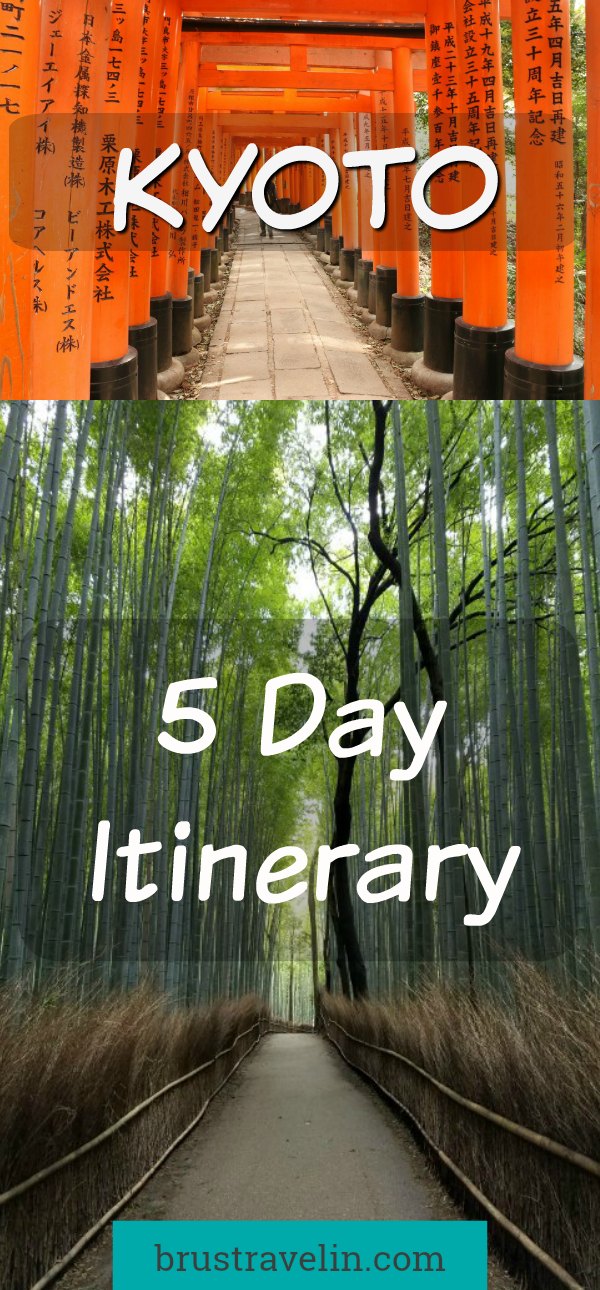Kyoto is such an iconic city with so much history, its hard to know where to start. We’ll help you narrow down your list. Unless you have unlimited time and money there’s no way to see everything Kyoto has to offer.
Getting There
We spent 6 nights in Tokyo and one night in Hakone before making our way to Kyoto. The bullet train from from Tokyo or Osaka is the best way to get there. Most people fly into Tokyo or Osaka.
We stayed at an AirBnb that was centrally located in the city. There were plenty of restaurants to walk to nearby, and Nijo Castle was about 4 blocks away.
Karasuma Oike Station was a couple blocks away which made it easy for us to get around the city. From this station travelers can get on the Karasuma subway line or the Tozai subway line. Neither of these are JR line, but you can easily connect to the JR line by going two stops to the south or west.
Day 1
Fushimi Inari Shrine
This temple is one of the most well known temples in Kyoto. There are thousands of red torii gates which straddle the paths to the top of the mountain. Expect to spend 2-3 hours if you plan on hiking to the top and try to start your hike early in the day to help with crowds.
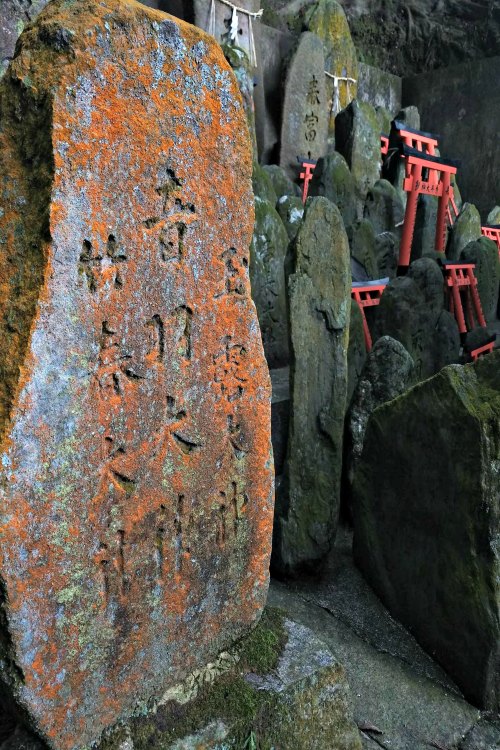
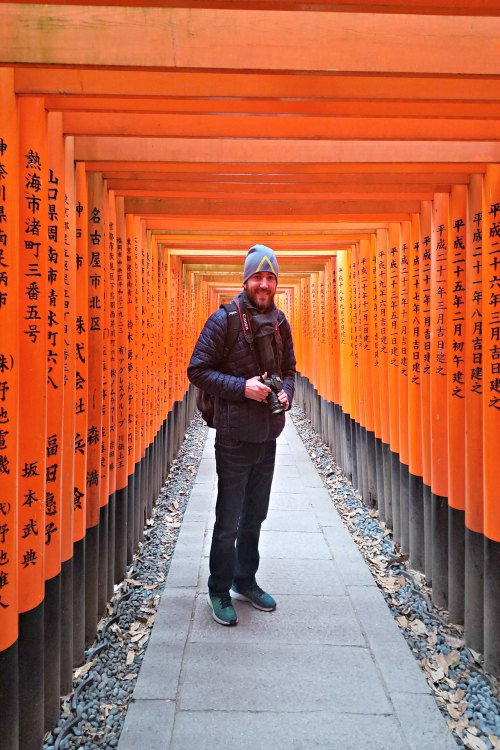
We took a path slightly less traveled to the top. This allowed us to enjoy the hike up without the throngs of people that are sure to be there. The path goes through cedar and bamboo forests along with some smaller shrines. The hike is much more gradual until the last little bit. We were questioning whether we made the correct choice taking this path until we started making our way back down.
If we had stayed on the main path it would have been a much steeper climb. The people we saw coming up were just as sweaty if not more than we were. This was during February no less, so be prepared to bring water, especially during warm weather. You will get to see plenty more of the torii gates on the way down.
At the top you will have many chances to get that coveted shot with no one else in it. You may have to be a little patient and it’s best to wait in a curve. If time allows it, there are plenty of additional temples around Fushimi Inari.
Kyoto Imperial Palace
The Kyoto Imperial Palace was amazing to walk around. Kyoto was the capital of Japan before Tokyo. This was where the emperor lived for hundreds of years.
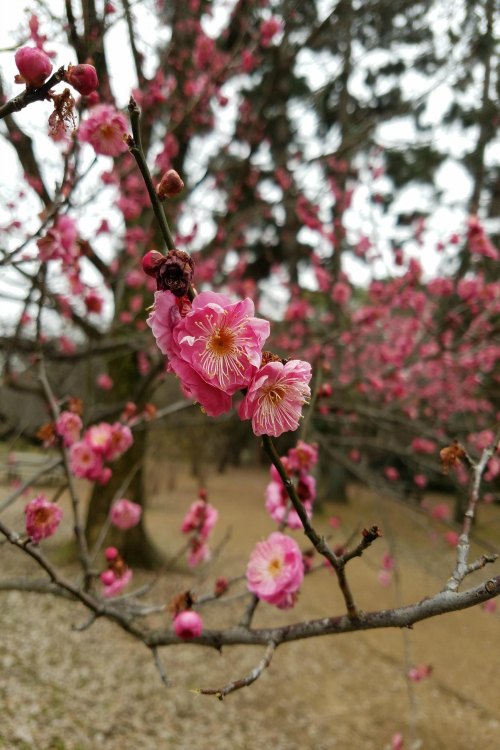
Our saying for the trip was “I bet it looks amazing in the spring (or autumn)”. This is because we were there during winter and most of the cherry blossoms and maples were bare. The palace grounds still looked amazing to us, but we could only imagine how beautiful these places would be in spring bloom or fall colors.
Day 2
Arashiyama Bamboo Forest
This is another one of those places that we’re sure everyone has seen a picture of but a place you just have to see in person. If you have a JR pass, Saga-Arashiyama Station is the closest to the forest. Arashiyama Station is closer but is a cable car that is not affiliated with JR.
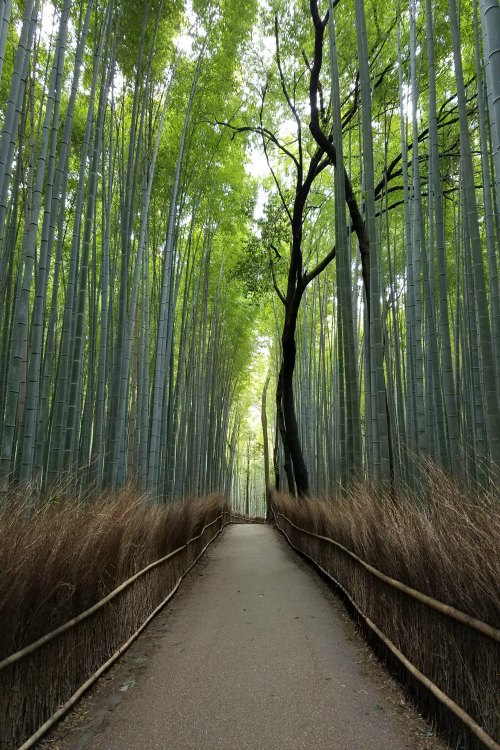
We went early in the morning to beat the crowds and because we had a long day planned. Our early arrival worked and we were able to get all the pictures we wanted. It is a much smaller area than we were expecting so it is easy to see how it gets crowded quick. Arashiyama is one of those places that transports you to another world. If you are lucky enough to go before the crowds make sure to take a moment and really take it all in. Watching the huge thick bamboo forest swaying in the wind is one of our favorite memories of Kyoto.
Leave the forest and head to Arashiyama station to take the cable car to Omuro-Ninnaji station.
Ninna-ji Temple
Ninna-ji Temple is a short walk from Omuro-Ninnaji station. One of the differences in many of the temples of Kyoto compared to Tokyo is that they cost yen to enter. They range from 400-500 yen. We felt it was worth it for most of the temples we had to pay to enter, but you could always explore the outer grounds of the temples for free.
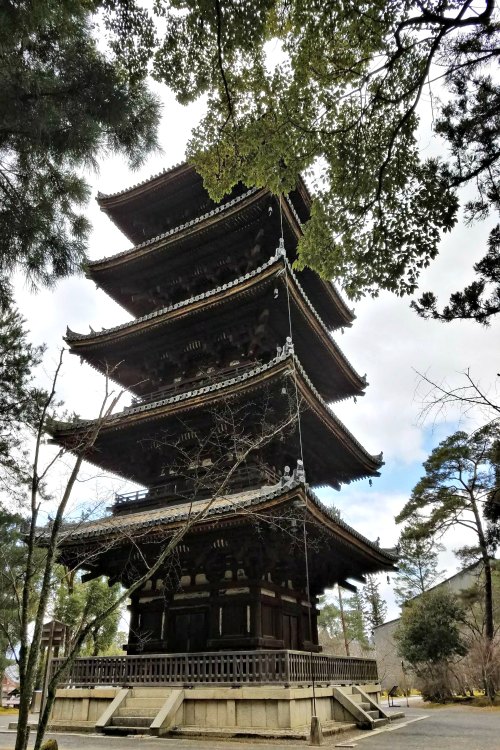
Ninna-ji was definitely worth it. Make sure to wear comfortable socks because the temples do not allow visitors to wear shoes inside. We spent about an hour admiring the rock garden, wall paintings, and the five story pagoda.
Next head to Ryoan-ji Temple.
Ryoan-ji Temple
This temple is famous for its rock garden containing 15 rocks. No matter where one stands you cannot see all 15 stones at the same time. Take some time to truly appreciate the rock garden and then head down the path. We spent around 30-45 minutes here.
Next up is Kinkaku-ji Temple.
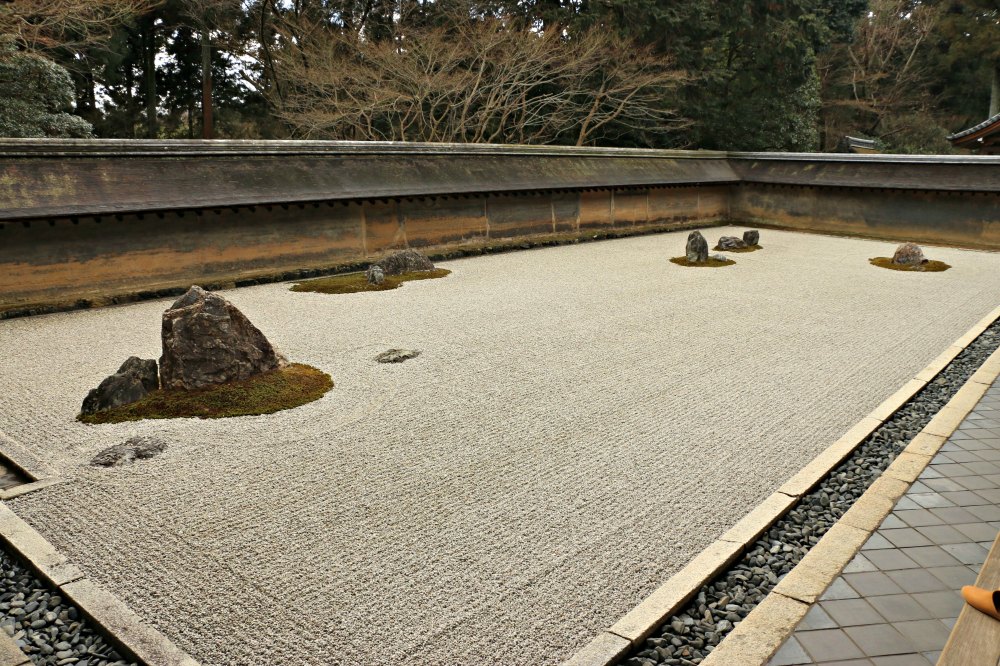
Kinkaku-ji (Golden Pavillion)
Walk on from Ryoan-ji and you will arrive at Kinkaku-ji Temple, also known as the Golden Pavillion. This is one of the most photographed buildings in Kyoto (maybe all of Japan) and you could definitely tell by the large crowds. We’re glad we saw this temple but there really isn’t much else here other than the building. We really enjoyed the other temples we visited that weren’t as crowded and had a more intimate feel to them.
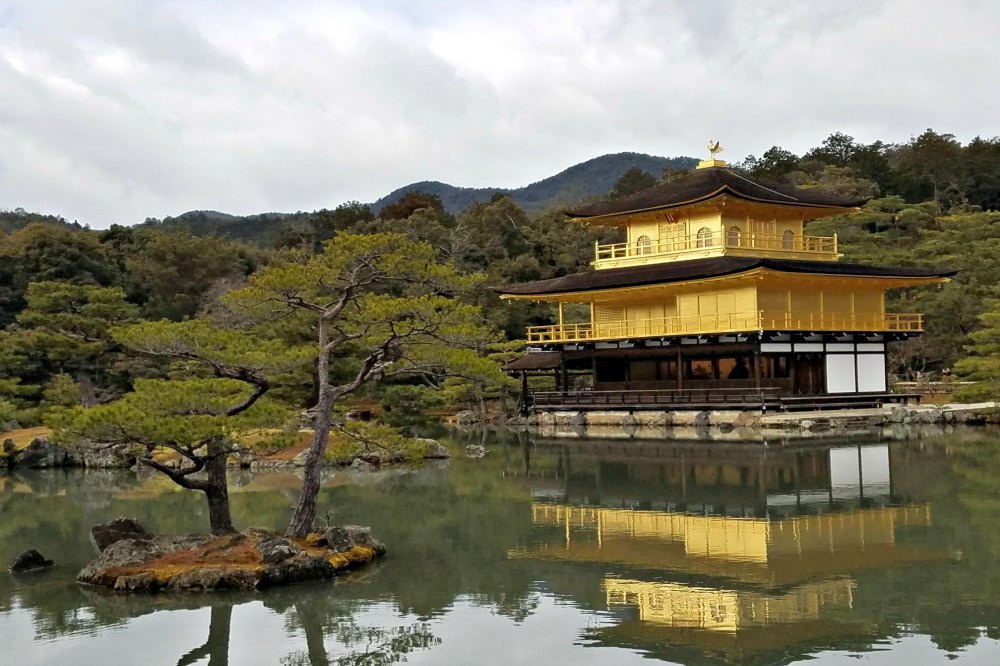
Leave Kinkaku-ji and find some lunch. There’s a number of restaurants near here to choose from. After lunch head to the Daitoku-ji Temple complex
Daitoku-ji Temple Complex
This area has many smaller temples and shrines each with its own uniqueness. These typically were around 200-300 yen to enter. The zen and rock gardens were so peaceful.

The three we explored were Ryogen-in, Zuihou-in, and Koto-in. Highly recommend all three of these. We’re sure there are others worth exploring as well. We spent around two hours exploring but we wish we had more time to spend here. If you have time you could easily spend a whole day exploring all the temples here, many of which close around 1600-1700.
One thing we couldn’t do without on our long days exploring the city was a portable charger. We used this portable charger to keep our phones and pocket wifi charged. This is one thing we wouldn’t travel without.
Day 3
Nara
The day we went to Nara was a rainy one so we ended up sleeping in half the day. We got to Nara around 1200. It takes about 45 minutes from Kyoto Station to Nara Station on the JR line.
Nara is where people from all over the world come to see the sacred deer. They are all over the place. You can buy protein wafers to feed them for about 100 yen. The deer will bow to you so you will feed them. Be careful though! These deer are sneaky and will snatch paper and other things out of your pockets.
While we were there the main temple Kofuku-ji Temple was being renovated so that was a little disappointing. We headed over to Todai-ji Temple. This temple was incredible, a definite must see! It has the largest bronze Buddha statue in the world. It is also one of the oldest all wooden buildings in the world. Plan on spending at least half a day in Nara and don’t forget to try the ice cream.
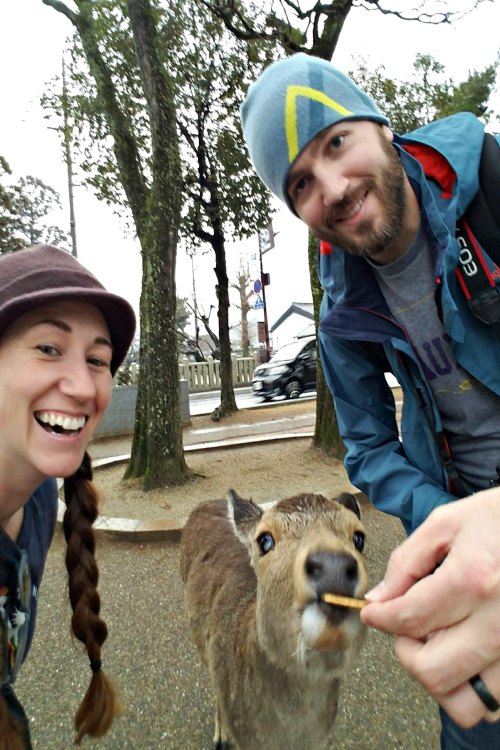
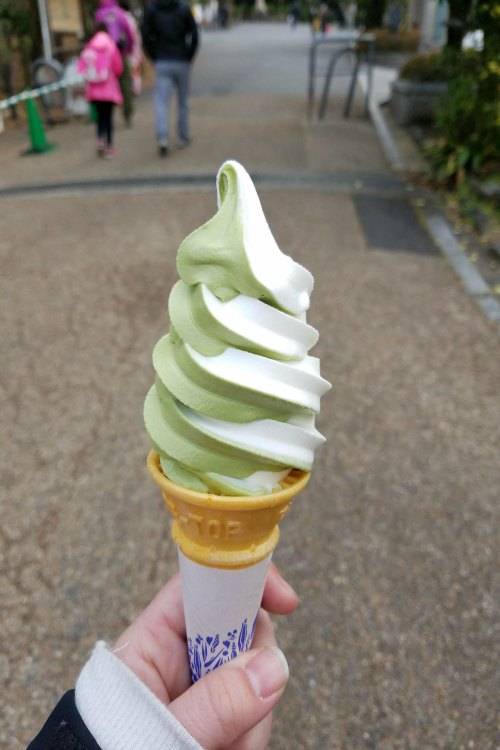
Day 4
Ginkaku-ji Temple (Silver Pavillion)
Day 4 was another long day for us. We started early with the Silver Pavillion of Ginkaku-ji Temple. The temple was supposed to be covered in silver leaf, hence the name, but the builders ran out of money. Despite the lack of silver, it was still one of our favorite temples.
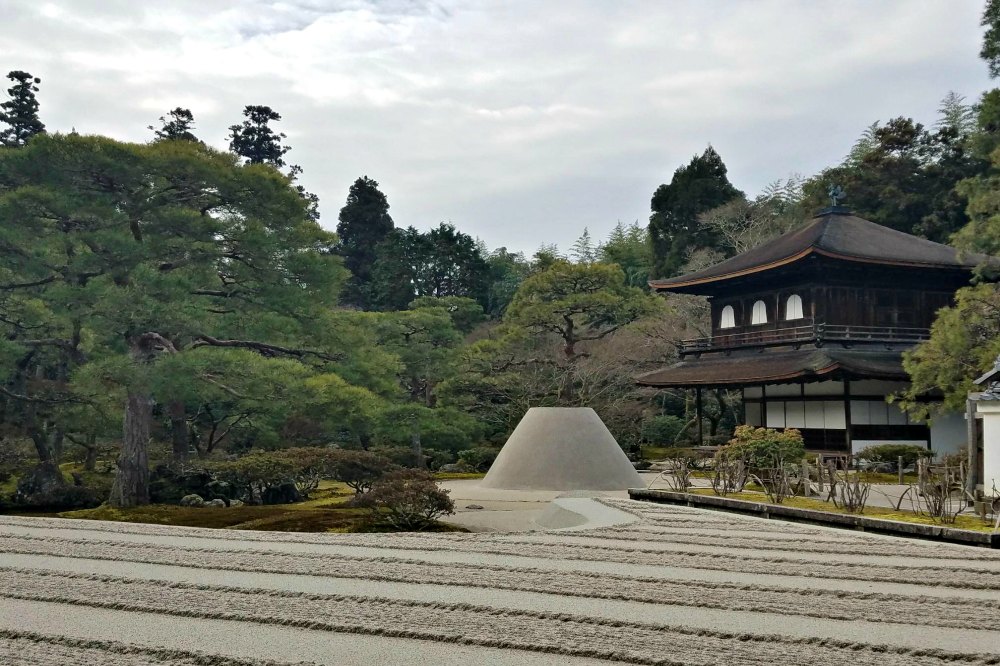
Walking the path through the moss covered ground seems unreal. Everything is so green and vibrant. It felt like it was a movie set because everything was so perfect and picturesque.
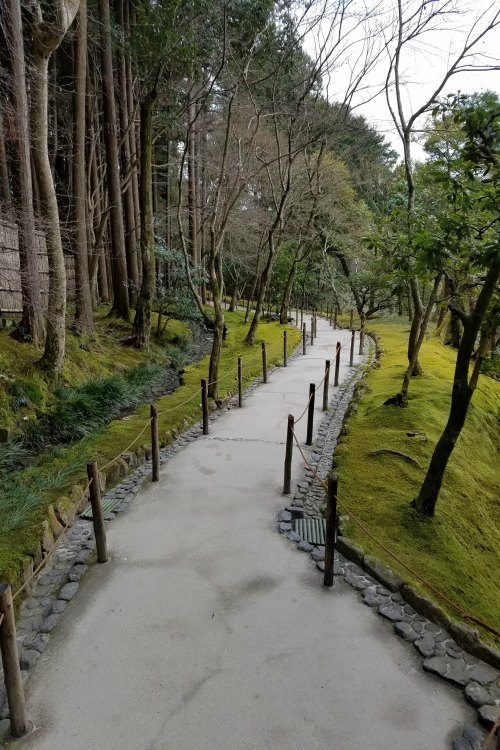
After finishing this temple we began the walk down the Path of Enlightenment. This was the path pilgrims took years ago. There are temples along the way to Gion. Honen-in is a small temple that is free to enter. If you’re not pressed for time it is worth it to walk through.
Zenrin-ji Temple was the one temple we thought was slightly overprice at 600 yen. Having said that we thought it would be incredible to see in the spring or fall. This was another of those times where being there in winter cost us even more beauty. This temple is actually more colorful than many of the others. It was unique and only suffered because of the time of year.
After Zenrin-ji head over to Nanzen-ji Temple. Here is a famous Roman style aqueduct that seems so out of place in Japan.
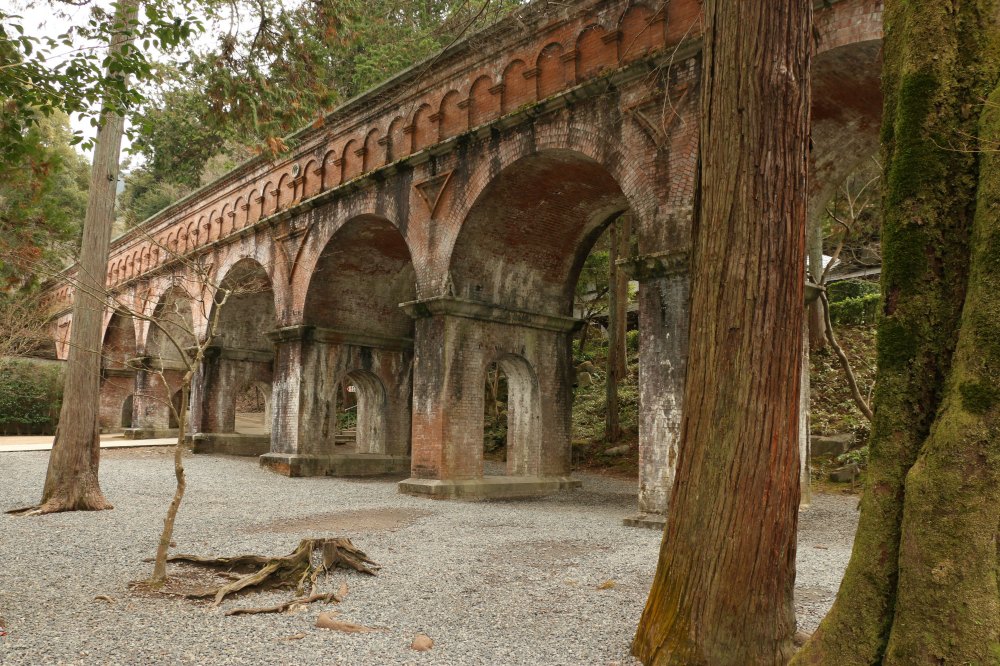
There are temples all along this path that we didn’t have time to stop at. Somehow we missed the Gion weeping cherry tree. We tell ourselves it probably didn’t look as amazing in winter anyway. Oh well, it leaves something for us to see when we go back.
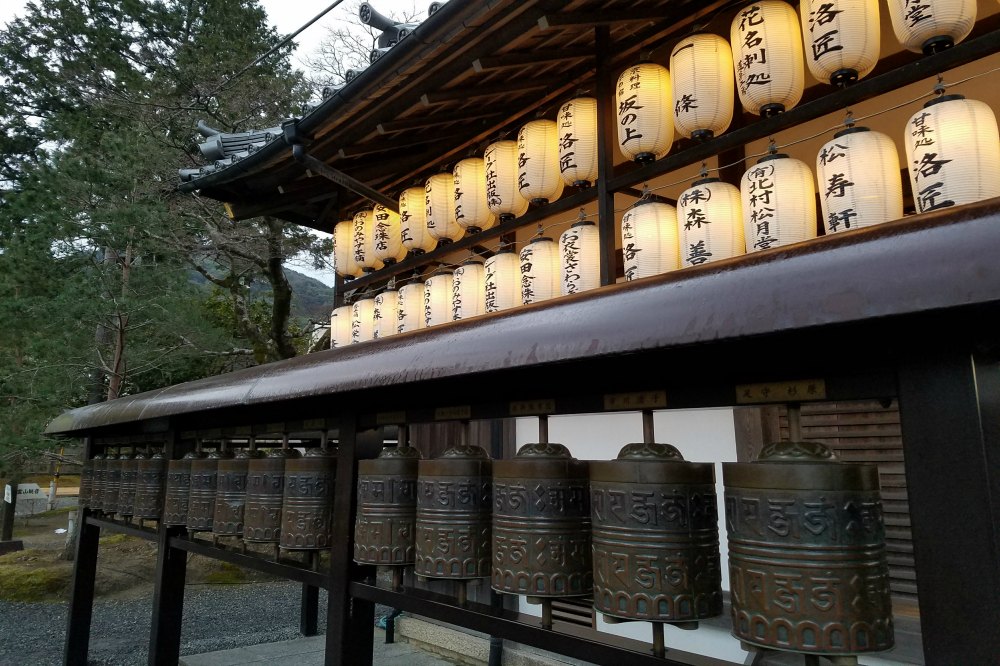
Just before arriving in Gion, there are a few more small temples worth walking around. There is also a giant Buddha called Ryozen Kannon. Make sure to get there before 16:30 or your pictures will have to be from under the gate like ours.
Gion
Gion is the district where everyone looks for geishas. If this is something you are interested in please remember to be respectful and ask them if you may take their picture. This place is more touristy with lots of little shops and trinket stores.
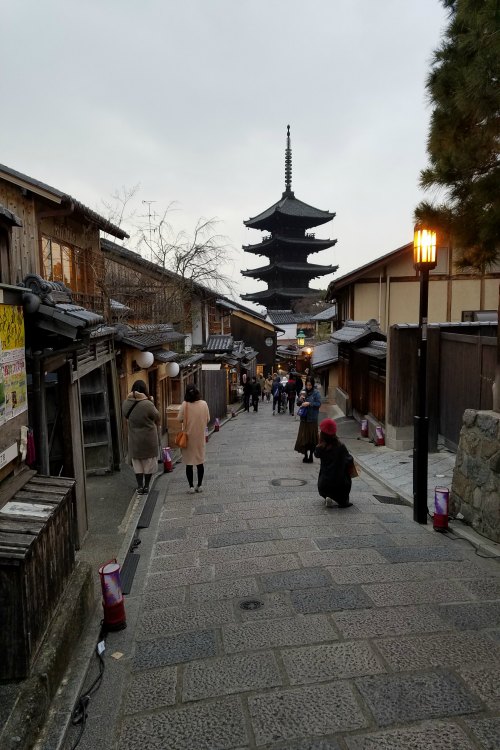
The narrow streets are a reminder of how old Kyoto is. This district is still similar to how it was hundreds of years ago. Its a beautiful reminder of how Japan used to look.
Kiyomizu-dera
Kiyomizu-dera is another one of the more famous temples. It offers amazing views of Kyoto. We heard this was a great place to catch the sunset but unfortunately it was cloudy the day of our visit. The structure of this temple is one of the most impressive things about it and luckily you can see that no matter the cloud coverage. We ended up spending a couple hours here do to its size and popularity.
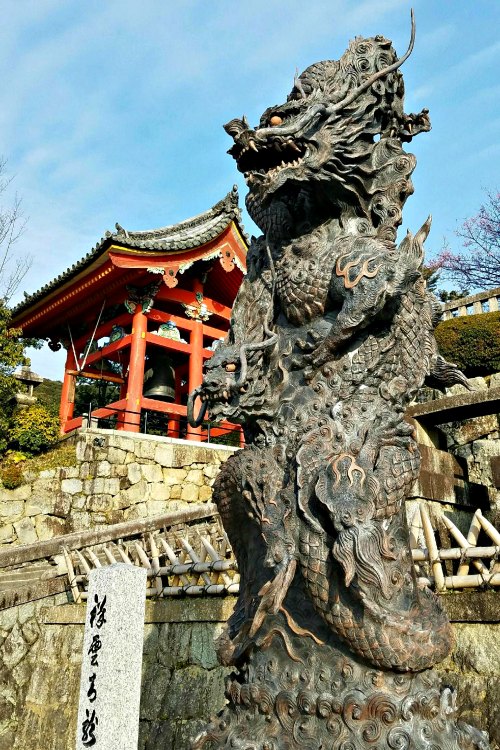
Day 5
Nijo Castle
Nijo Castle was one of our favorite places we visited in all of Japan. Some of the biggest events that shaped Japan’s history happened in this castle. We spent a few hours walking through the castle. It is well worth the small entrance fee.
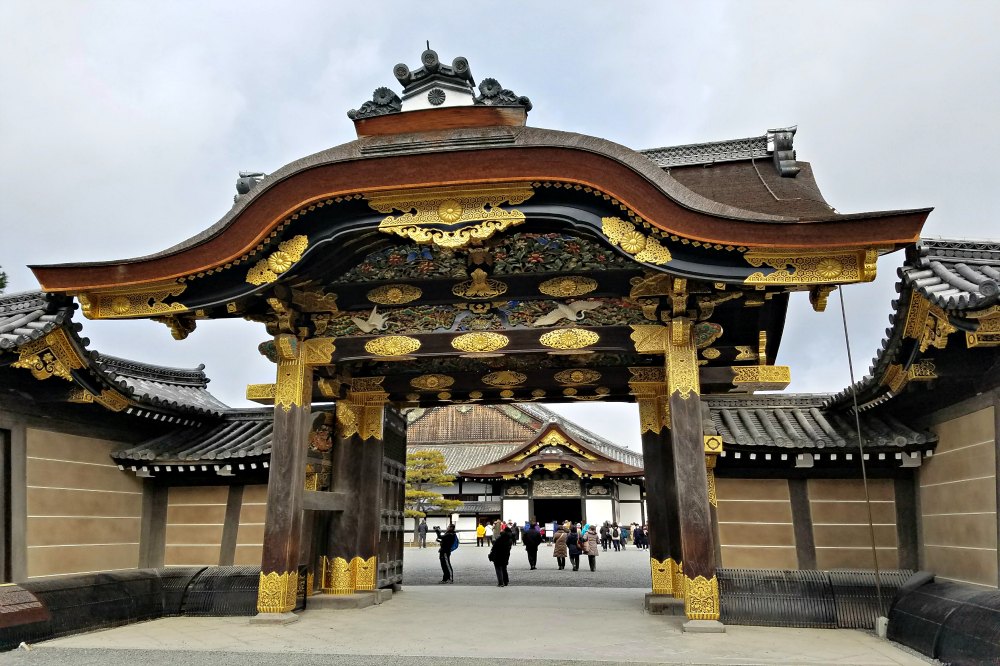
There was also another small temporary exhibit outside that featured wall paintings that were hundreds of years old. We really enjoyed the overall experience of this place and would highly recommend adding this to your must see places in Kyoto.
Kyoto was such an amazing city. It’s extremely difficult to narrow down exactly what you should see. If you only have one day in Kyoto, we feel these places are must see: Fushimi-Inari, Arashiyama Bamboo Forest, and Nijo Castle.
Restaurants in Kyoto
You’re going to be doing a lot of walking seeing all these places and you’re sure to work up an appetite. Luckily Kyoto has some amazing places to eat.
Manmaru No Tsuki まんまるの月
This restaurant was one of the first places we ate at in Kyoto. There are many restaurants that require a reservation (usually made through your hotel) but we were staying in an Airbnb. They open at 1800 so we arrived at 1800 and were able to get a table but they asked us to be done by 1900 when their reservations begin to arrive.
We started off with garlic bread and suji. Suji is a meat dish made using a cut from the Achille’s tendon. The bread was delicious and the suji was even more amazing. The suji reminded us of blackened alligator.
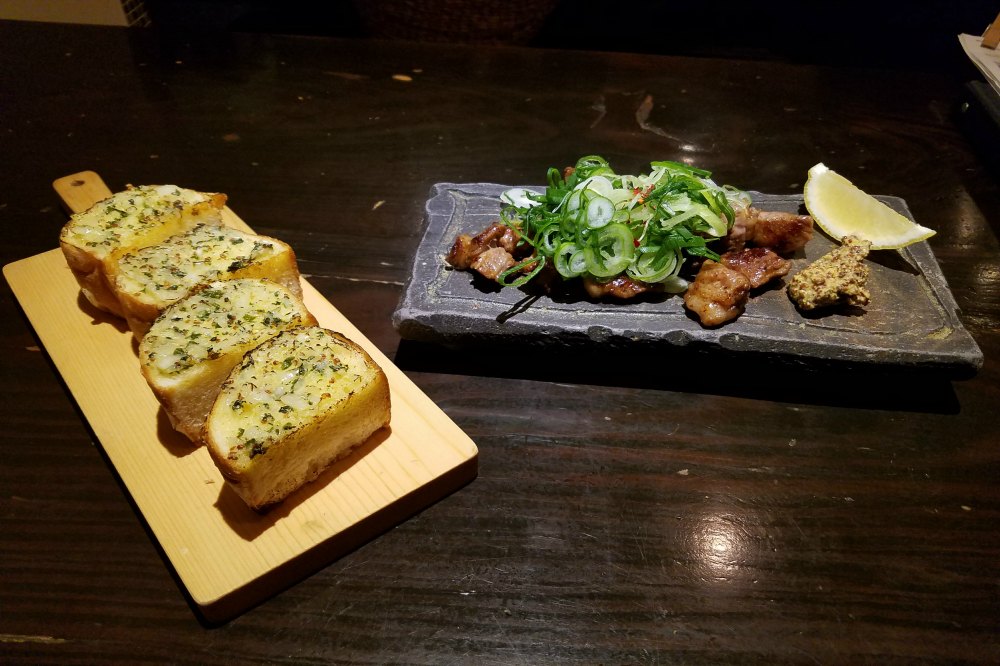
For our main course we had two types of okonomiyaki. Okonomiyaki is a type of Japanese pancake that is made with a variety of ingredients and cooked on a grill. Kansai-style (western style) is a pancake made from wheat flour mixed with meat, vegetables, and other ingredients. It was much thicker than we expected and was slightly runny on the inside.
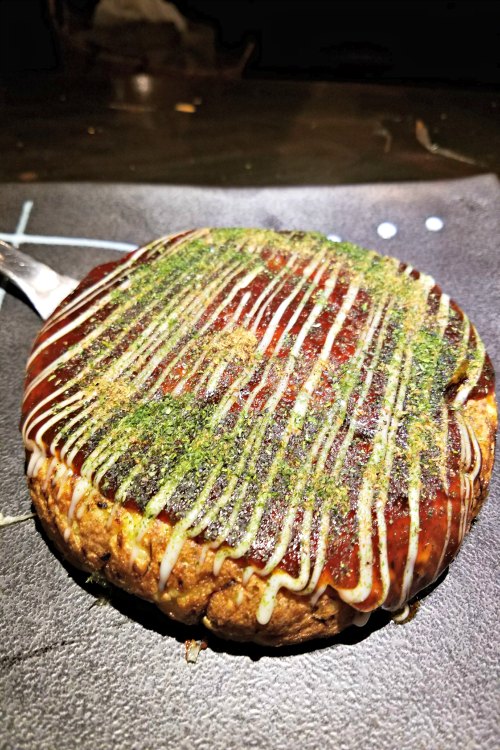
The other was a more traditional style okonomiyaki with pork on top. We enjoyed the flavor of both but this one was our favorite. It had a little more meat on it and the flavors were out of this world. We could have easily ordered the appetizers and split one of the main dishes. It was all we could do to eat all of them both!
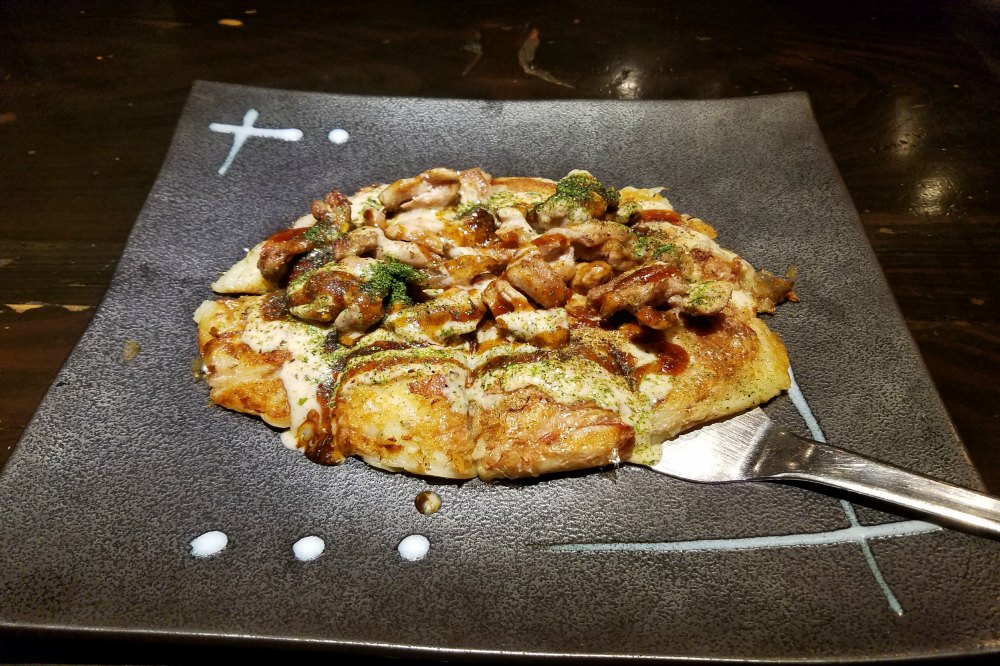
Ippudo Nishikikouji 一風堂 錦小路店
Don’t let the fact that this is a chain of ramen restaurants turn you off from eating here. This place was so good we ate here twice! We loved the spicy ramen that they serve. The flavor of this spice is similar to the type of spices we love to eat back home.
Also we would recommend adding another serving of noodles when you order. You will have plenty of delicious spicy juice leftover from the serving size that comes with it. Finish this all off with an ice cream bar for dessert and you’ll be set for the night!
There are also locations all over Japan. This is one place you don’t want to miss!
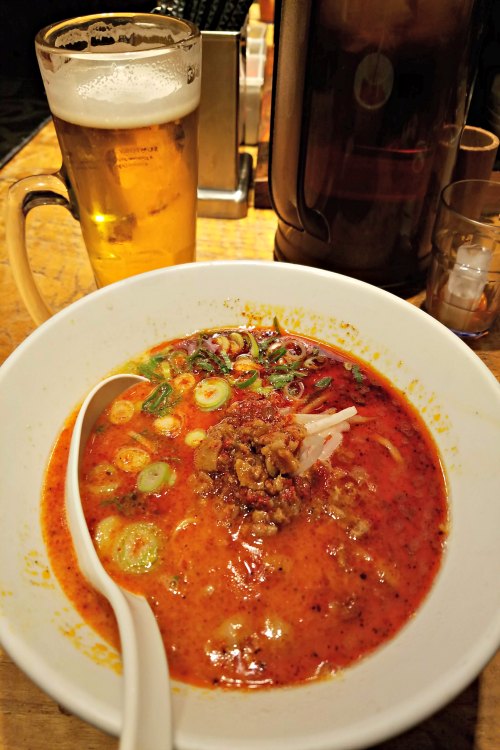
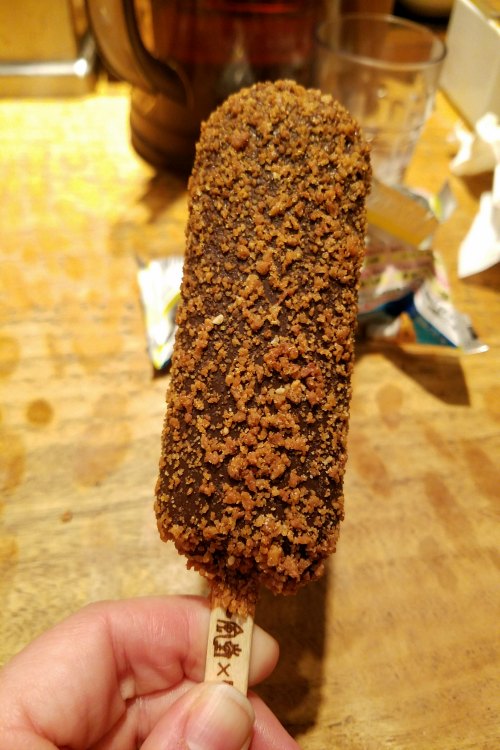
Ichiran Kyoto Kawaramachi 一蘭 京都河原町店
We ate at this restaurant while we were in Tokyo but there is also a Kyoto location. It was too good to leave off the list. The ramen broth is so rich and delicious. It’s just so full of flavor you will definitely be getting a second helping of noodles.
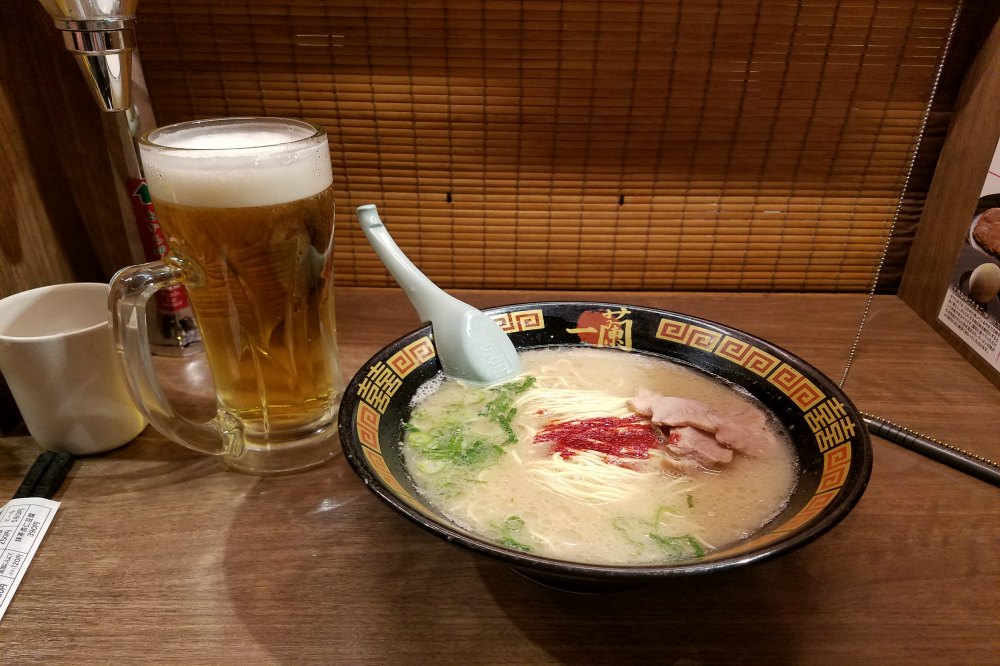
Hafuu 肉専科はふう 本店
Since it was Ryan’s birthday we decided to splurge a little. If you are looking for a chance to experience some of the delicious beef options Kyoto is known for, Hafuu is a great option. It’s a tasting menu only style restaurant that specializes in beef. There are several different tasting menus to choose from. They also have an amazing selection of foreign and domestic wines.
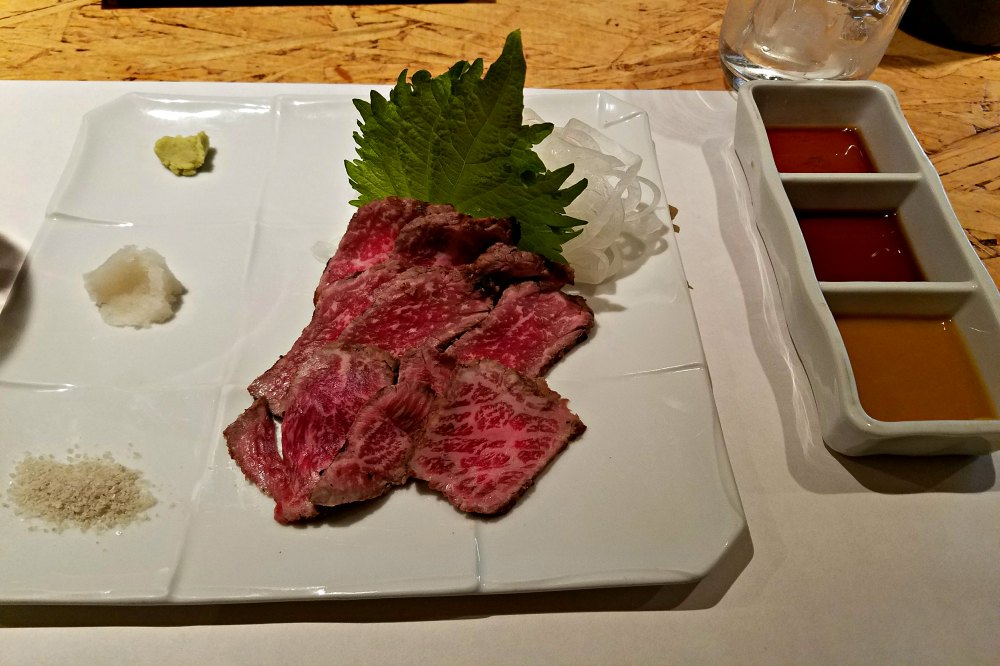
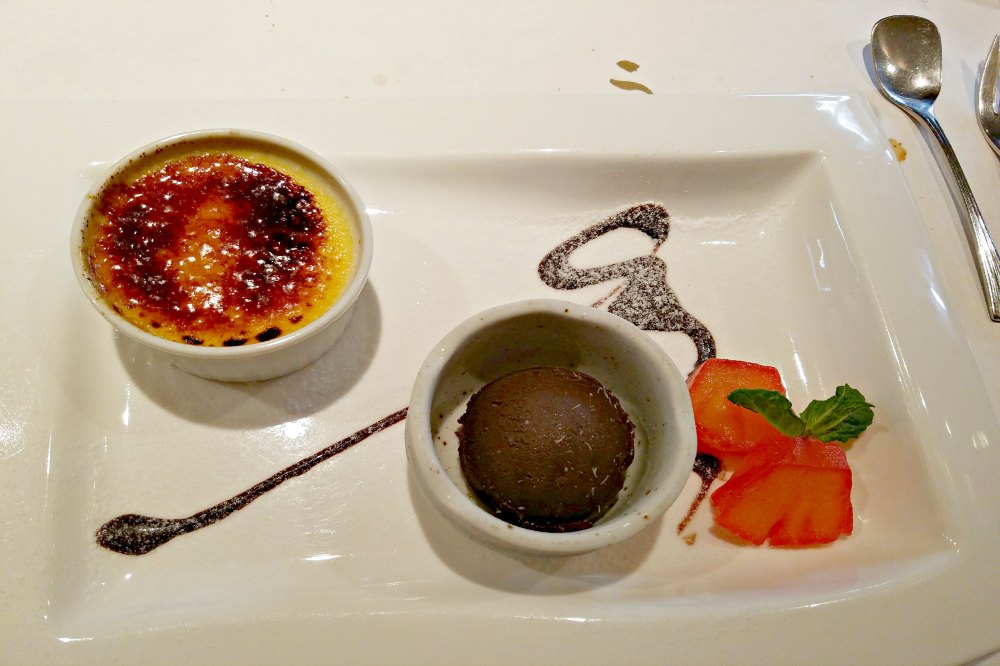
La Jolla ラホヤ
So I know you’re probably wondering why there is a Mexican restaurant on a list about restaurants in Kyoto. Well after being in Japan for a week and a half we just needed a little reset to our taste buds. We talked to multiple people before and during our trip that said they got burnt out because they ate sushi (or ramen) everyday. Who can blame them though because both are so delicious in Japan. We did a good job of mixing it up so we didn’t get tired of any one food. Still we began to miss the flavors we eat often back home.
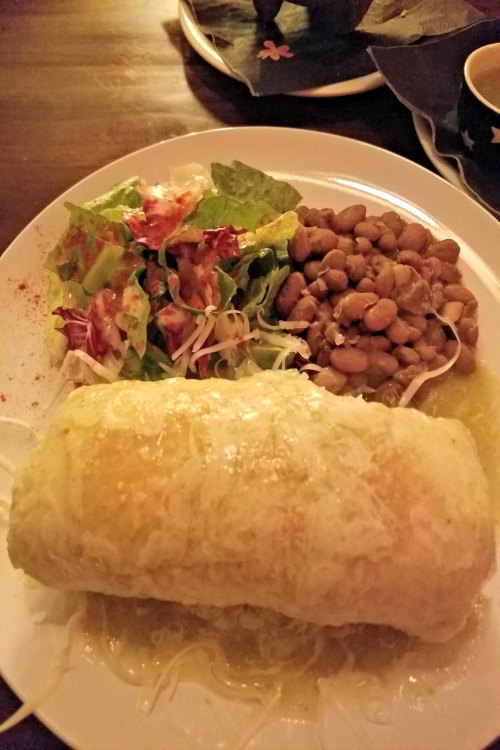
This restaurant had the best chips we’ve ever had! They were so warm and crispy and fresh. The salsa, the guacamole, the burritos. Seriously who would have thought we would be able to get such amazing Mexican food in Japan. This was such a delightful surprise to us.
Kyoto lived up to all our expectations and then some. The temples, history, and food were all incredible. We hope these suggestions help you have a wonderful time in Kyoto. Please feel free to leave any comments or questions below.
